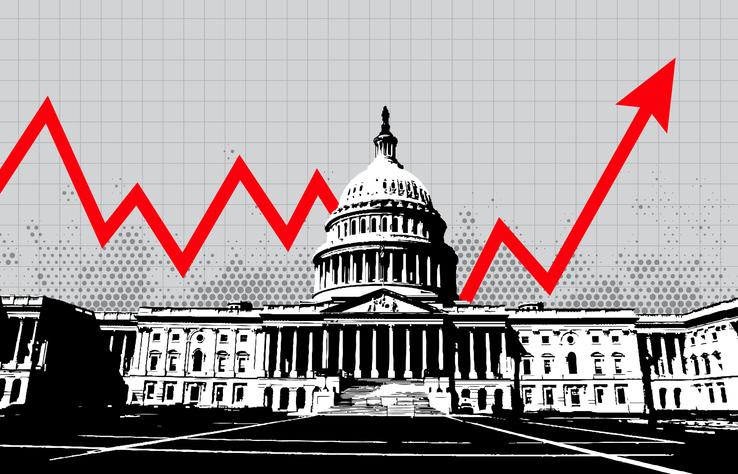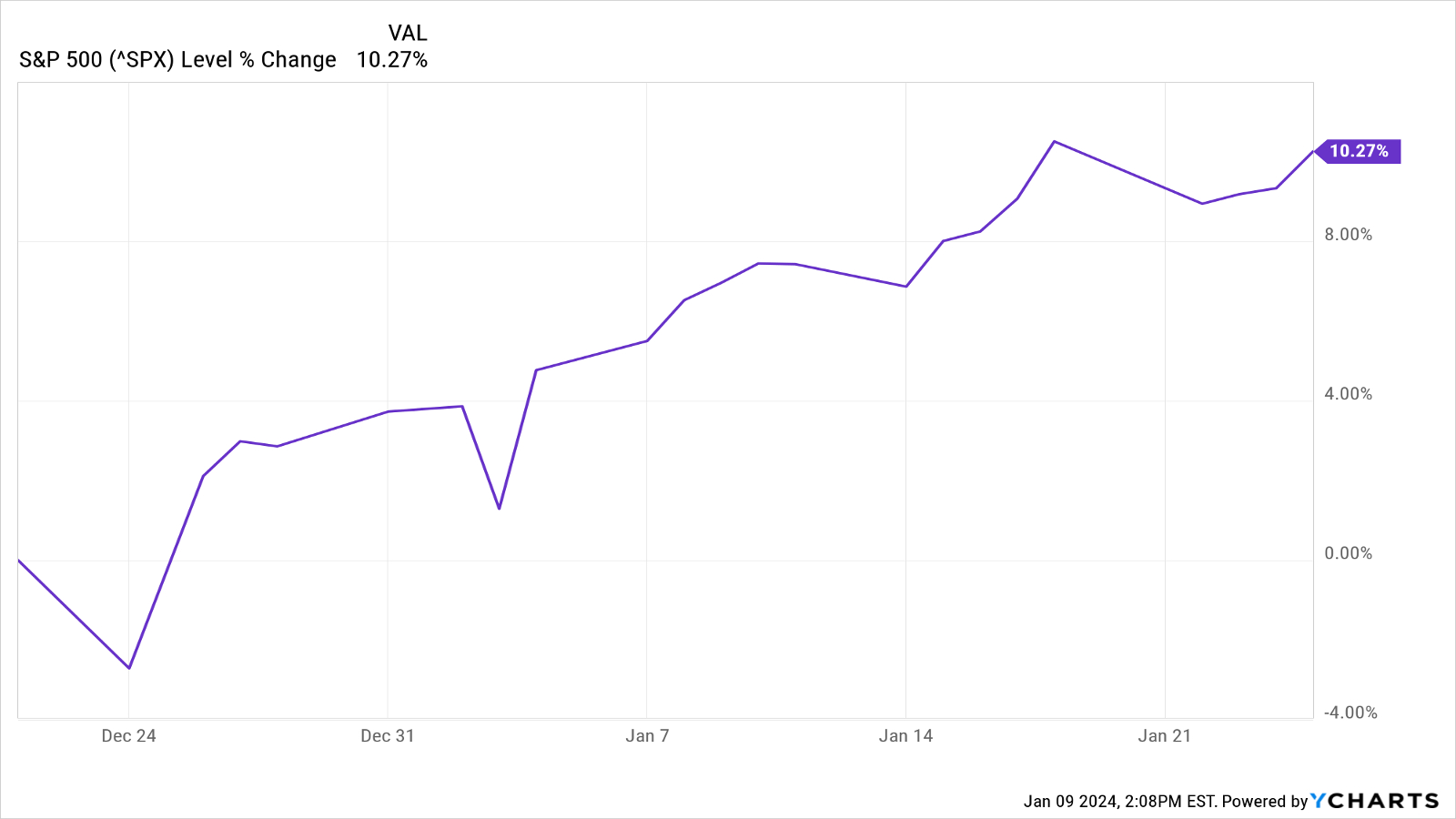What Does a Government Shutdown Mean for Stocks?
A federal government shutdown doesn't spell doom for stocks.


Karee Venema
Federal government shutdowns aren't bad for stocks, at least historically speaking.
Although the market hates the threat of a federal government shutdown – an outcome that looks increasingly possible should Congress not agree to a spending bill before Friday night's deadline – the S&P 500's performance during past shutdowns has been pretty good.
If our latest brush with a government shutdown seems particularly irksome, it may be because investors are desperately trying to sift through the noise sparked by head-spinning tariff headlines and the impact they are having on markets.

Sign up for Kiplinger’s Free E-Newsletters
Profit and prosper with the best of expert advice on investing, taxes, retirement, personal finance and more - straight to your e-mail.
Profit and prosper with the best of expert advice - straight to your e-mail.
"Tariff uncertainty has captured most of the blame for the selling pressure and is exacerbating economic growth concerns," says Adam Turnquist, chief technical strategist for LPL Financial.
"In only a few weeks, the broader market has gone from record highs to correction territory, marked by a drawdown of at least 10% from a new high," Turnquist adds.
And while drawdowns are normal and healthy for markets, creating oversold conditions and opportunity for nimble investors, the strategist says that the "damage to longer-term breadth, lack of institutional participation, and defensive rotational pressures leave us cautious on buying the dip right now."
Given this backdrop for equities, it's fair to say that dysfunction in D.C. doesn't help.
Stock performance during government shutdowns
Happily, for market participants, the historical record for stocks when the federal government shuts down is far from one of doom and gloom.
There have been 21 government shutdowns since 1976, but on only four occasions were operations affected for more than one business day, writes Jeffrey Buchbinder, chief equity strategist at LPL Financial. That leaves us with only four "true" shutdowns, Buchbinder notes, the last occurring in late 2018 into early 2019.
It's tough to remember now, but the S&P 500 returned 10.3% during the 35-day shutdown of 2018-2019. Have a look at the chart below:

Stocks did fine during the extended shutdown of October 2013 too.
"Historically, markets were not materially impacted by a shutdown," Buchbinder says. "For example, in 2013, the House and Senate were in a standoff over funding for the so-called Affordable Care Act and the government was shut down for 16 days during the first part of October. The S&P 500 had some down days but overall, the equity market took all the political drama in stride with a 3.1% advance during those 16 days."
It's sort of counterintuitive, but during the 21 government shutdowns, the S&P 500 rose 55% of the time, generating an average return of 0.3%, according to data from Carson Group. Even better, 12 months after the end of the shutdown, the S&P 500 was higher 86% of the time, with an average return of 12.7%.
Past performance is no guarantee of future results, but the record for stocks in government shutdowns is almost encouraging. When the last federal government shutdown ended in 2019, the S&P 500 went on to return almost 24% over the next 12 months. There are probably plenty of market participants who would take that deal again.
Related content
Get Kiplinger Today newsletter — free
Profit and prosper with the best of Kiplinger's advice on investing, taxes, retirement, personal finance and much more. Delivered daily. Enter your email in the box and click Sign Me Up.

Dan Burrows is Kiplinger's senior investing writer, having joined the august publication full time in 2016.
A long-time financial journalist, Dan is a veteran of MarketWatch, CBS MoneyWatch, SmartMoney, InvestorPlace, DailyFinance and other tier 1 national publications. He has written for The Wall Street Journal, Bloomberg and Consumer Reports and his stories have appeared in the New York Daily News, the San Jose Mercury News and Investor's Business Daily, among many other outlets. As a senior writer at AOL's DailyFinance, Dan reported market news from the floor of the New York Stock Exchange.
Once upon a time – before his days as a financial reporter and assistant financial editor at legendary fashion trade paper Women's Wear Daily – Dan worked for Spy magazine, scribbled away at Time Inc. and contributed to Maxim magazine back when lad mags were a thing. He's also written for Esquire magazine's Dubious Achievements Awards.
In his current role at Kiplinger, Dan writes about markets and macroeconomics.
Dan holds a bachelor's degree from Oberlin College and a master's degree from Columbia University.
Disclosure: Dan does not trade individual stocks or securities. He is eternally long the U.S equity market, primarily through tax-advantaged accounts.
- Karee VenemaSenior Investing Editor, Kiplinger.com
-
 Stock Market Today: Stocks Gain on Tech, Auto Tariff Talk
Stock Market Today: Stocks Gain on Tech, Auto Tariff TalkThe Trump administration said late Friday that it will temporarily halt tariffs on some Chinese tech imports.
By Karee Venema
-
 Sam's Club Plans Aggressive Expansion: Discover Its New Locations
Sam's Club Plans Aggressive Expansion: Discover Its New LocationsSam's Club expansion plans will open up to 15 new stores each year. Learn where they plan to open in 2025.
By Sean Jackson
-
 Stock Market Today: Stocks Gain on Tech, Auto Tariff Talk
Stock Market Today: Stocks Gain on Tech, Auto Tariff TalkThe Trump administration said late Friday that it will temporarily halt tariffs on some Chinese tech imports.
By Karee Venema
-
 What Is the Buffett Indicator?
What Is the Buffett Indicator?"It is better to be roughly right than precisely wrong," writes Carveth Read in "Logic: Deductive and Inductive." That's the premise of the Buffett Indicator.
By Charles Lewis Sizemore, CFA
-
 10 Major AI Companies You Should Know
10 Major AI Companies You Should KnowThese 10 AI companies are at the forefront of machine learning. Find out how they’re driving innovation and jostling to be the biggest players in the game.
By Tom Taulli
-
 How Baby Boomers and Gen Xers Are Redefining Retirement Living
How Baby Boomers and Gen Xers Are Redefining Retirement LivingBoth generations need to embrace change and leverage real estate as a dynamic asset in their retirement planning. Here's how financial advisers can help, too.
By David Conti, CPRC
-
 How Good Advisers Manage Risk in Challenging Markets
How Good Advisers Manage Risk in Challenging MarketsThey understand the difference between what might be real challenges to an investor's strategy and fear brought on by market volatility.
By Ryan L. Kirk, CFA®
-
 Financial Planning's Paradox: Balancing Riches and True Wealth
Financial Planning's Paradox: Balancing Riches and True WealthWhile enough money is important for financial security, it does not guarantee fulfillment. How can retirees and financial advisers keep their eye on the ball?
By Richard P. Himmer, PhD
-
 A Confident Retirement Starts With These Four Strategies
A Confident Retirement Starts With These Four StrategiesWork your way around income gaps, tax gaffes and Social Security insecurity with some thoughtful planning and analysis.
By Nick Bare, CFP®
-
 Should You Still Wait Until 70 to Claim Social Security?
Should You Still Wait Until 70 to Claim Social Security?Delaying Social Security until age 70 will increase your benefits. But with shortages ahead, and talk of cuts, is there a case for claiming sooner?
By Evan T. Beach, CFP®, AWMA®